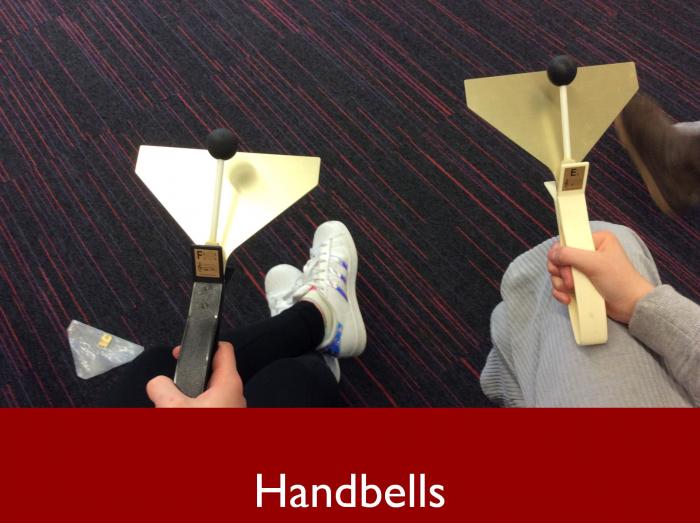






Notes from the Belfry
It’s beginning to sound a lot like Christmas in music lessons for 5MS because Mr Biggs has got the handbells out for them to play. The theme this term in practical work is performance, with the children working as a team to combine a melody and an accompaniment. In musical terminology, they will tell you that it is an ensemble. For the first half term, they concentrated on the descant recorder, which was a brand new instrument for all but two of them. By half term, they were astounded by the degree of togetherness they had achieved. Maryam wisely ascribed this to 5MS’ exceptional listening skills as they performed as a group. When they listened to the recording Mr Biggs had made, Henry was surprised and impressed that both parts of the piece could be heard quite distinctly.
Now for the handbells…As the cases were opened, first impressions were somewhat confused. These bells were nothing like what the children had been expecting. Noah thought they looked like wallpaper scrapers, and indeed I have cleared frost from my windscreen on a frosty morning with a similar looking tool. What the children were looking at were belleplates, a slightly cheaper version of the traditional handbells, which are eye-wateringly expensive to buy.
Mr Biggs told the group not to be discouraged; these instruments can still produce a sound every bit as uplifting as a church bell. Everyone knows about church bells and, when asked, the children in 5MS could explain where the bells can be found in a church. If you are in the centre of Solihull at the weekend, you can often hear the bells of St Alphege being rung. Alice told the others that she has had a go at ringing a church bell, demonstrating how you pull down the rope to ring and describing the potentially dire consequences of failing to let go afterwards. This lovely sound, Mr Biggs informed the group, is a peal of bells. This was puzzling, as Freddie said he associated peeling with potatoes or a piece of fruit. It turns out that peel and peal are a pair of the dreaded homophones, designed to try the patience of even the most accomplished spellers and their teachers.
Each handbell plays just one note so, in order to make a tune, the players have to ring in sequence. The set used by 5MS covers more than one octave, and the bells are labelled with a letter to show the note and a number to indicate whether the note will be a low or high pitch. As with conventional bells, the larger instruments produce the lower notes. Grace was concerned that Mr Biggs seemed to have forgotten something. Where was the piece of music for the players to follow? However, he reassured everyone that this wasn’t necessary and they should rely on his hand signals during the performance.
The technique for playing the handbells is quite precise. They are ‘thrown’ rather than rung. Throwing refers to the forward motion you make with the wrist. With this established, it was time to have a go. All eyes were on Mr Biggs as he signalled when each child was to ring and, amazingly, a tune of sorts emerged. Older readers may remember a TV game show from years ago called Name That Tune. Well, Henry should have been on it, because he named Away in a Manger in three, notwithstanding the fact that one person rang their bell too early and another forgot to ring it at all.
It was by no means easy. You can tell from the photographs how hard the children had to concentrate. By the end of the lesson, though, there was a feeling of pleasure and satisfaction at what could be achieved by working together.
Beyond the melody were the chords, the equivalent of striking two or more keys simultaneously on the piano. For this to work, it was essential that the handbells were rung at precisely the same moment, otherwise the result was messy and discordant.
Astonishing progress was made during the lesson. By the end of it, the children were ready to put the accompaniment and the melody together. Mr Biggs had to multitask, giving signals for both notes and chords. Hands weren’t enough. Fists and thumbs were also required, which I am led to believe was quite comical to watch. The children were delighted with how good it all sounded, and how much they had accomplished in such a short space of time.
5MS will continue to practise the handbells over the next few weeks and will perform Away in a Manger as part of the Carol Service next month. I am told that 5GH are also working on a handbell piece, so there will be lots to look forward to when we go to St Alphege